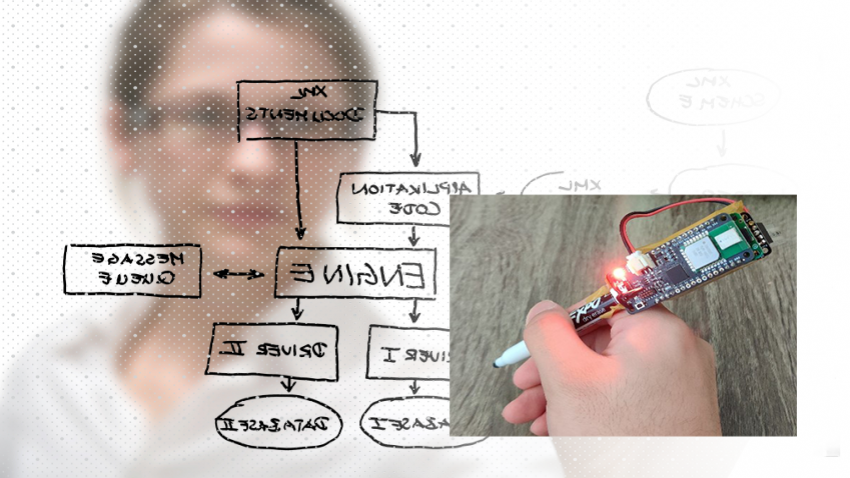
New Device Cuts Cost of Digitizing Whiteboard Content
Despite almost two years of online education, digitally capturing a whiteboard is still a challenge. Now, Georgia Tech researchers have created an attachment that can replicate any writing instrument’s movements.
The tool uses wireless location, inertial sensors, and pressure sensing to determine where the pen is on the board and digitize those movements to stream to a computer. Costing only $100-$150, it’s nearly a tenth of the price of a smartboard. For an hour lecture, it uses just 1.5 MB of data, which is about 400 times smaller than filming the whole board.
Before this innovation, the two primary ways of digitizing content both had logistical problems. While a smartboard is accurate, it’s often prohibitively expensive for most school budgets. Although filming video of the whiteboard is more cost-effective, it results in large video files that don’t transfer well over low internet speeds. The potential inequity of this among students inspired the researchers to work on solutions.
“Not being able to digitize the whiteboard increases the learning gap,” said School of Computer Science Assistant Professor Ashutosh Dhekne. “If you have a good internet connection, you can see the whiteboard clearly in a video, but if you don’t, the learning experience deteriorates quickly.”
The researchers focused on making the experience seamless for the teacher. So, they decided not to modify the whiteboard or tip of pen itself but focus on attachments.
The attachment needs to sense where the pen was as a person wrote. Location tracking alone isn’t sufficient, so the researchers relied on a fusion sensor approach:
- Inertial sensors: Each sensor contains an accelerometer, gyroscope, and magnetometer that can determine the exact orientation of the pen on a larger frame of reference, in this case, the whiteboard.
- Wireless radio technology: This tracks how far a pen is from the fixed wireless antenna sensors at the border of the whiteboard.
- Pressure sensor: This sensor detects when the pen touches the whiteboard surface, based on how much pressure is coming from the user’s grip.
The researchers believe this attachment could be used for more than just online learning and meetings; it could be also attached to scalpels or paintbrushes for medical or art instruction.
“Documenting the process of creating something by hand is difficult, but this tool has the potential to make that possible,” Dhekne said.
Dhekne, SCS Professor Mostafa Ammar, and SCS Ph.D. student Yifeng Cao presented the research in the paper, ITrackU: Tracking a Pen-like Instrument via UWB-IMU Fusion, at The 19th ACM International Conference on Mobile Systems, Applications, and Services (MobiSys) in June.
As computing revolutionizes research in science and engineering disciplines and drives industry innovation, Georgia Tech leads the way, ranking as a top-tier destination for undergraduate computer science (CS) education. Read more about the college's commitment:… https://t.co/9e5udNwuuD pic.twitter.com/MZ6KU9gpF3
— Georgia Tech Computing (@gtcomputing) September 24, 2024


